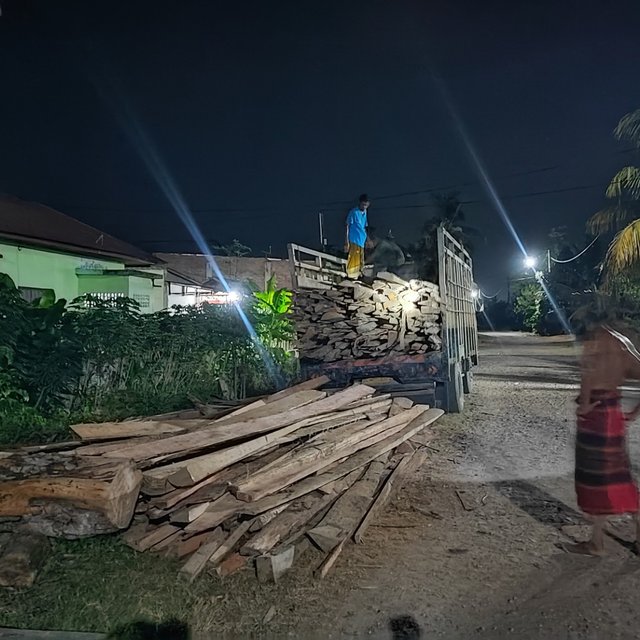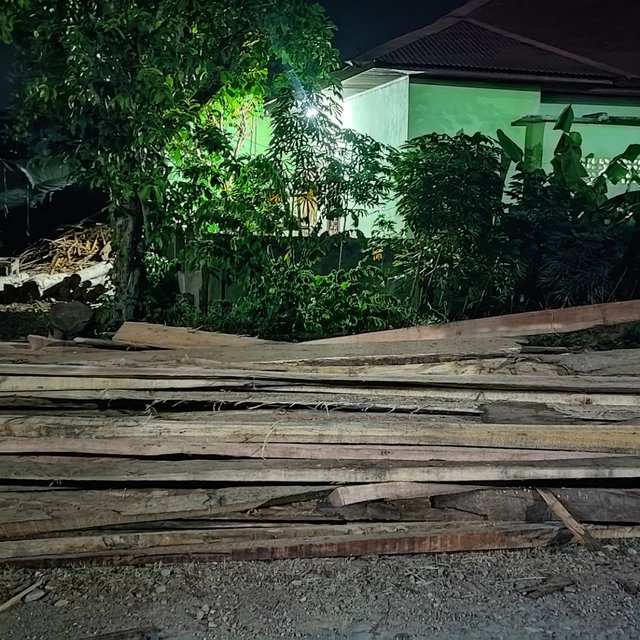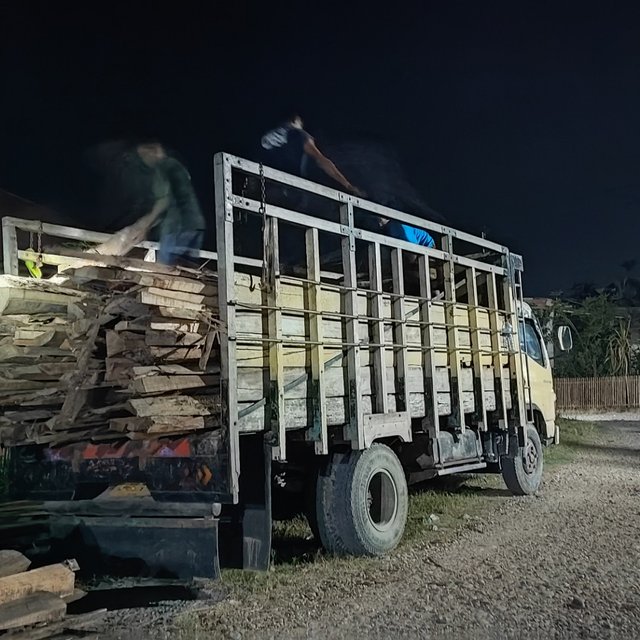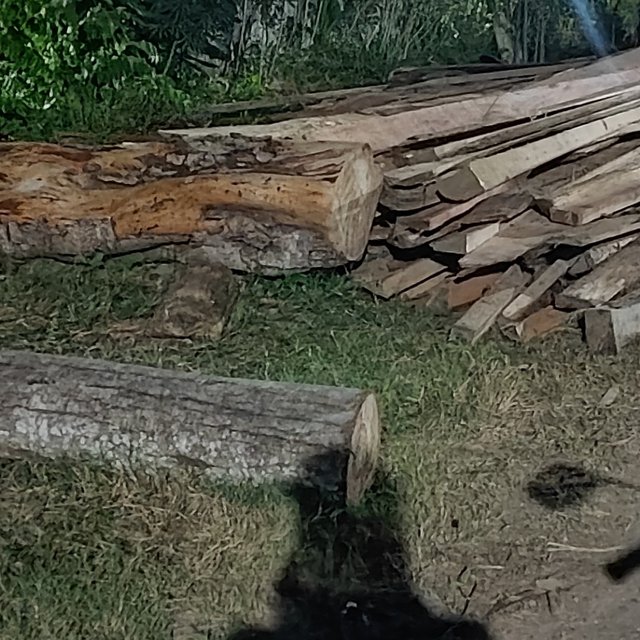Penurunan Kayu





Pohon yang tumbuh megah di hutan memiliki perjalanan yang menakjubkan saat diubah menjadi material bangunan yang kita kenal sebagai kayu. Di balik layar, sawmill atau pabrik penggergajian adalah tempat di mana magisnya terjadi. Mari kita telusuri proses produksi kayu di sawmill untuk memahami bagaimana dari potongan-potongan kayu kasar ini kita bisa mendapatkan material bangunan yang kokoh dan tahan lama.
Tahap 1: Pemilihan dan Pembalakan Pohon
Proses dimulai dengan pemilihan pohon yang sesuai untuk dijadikan kayu bangunan. Pohon-pohon ini dipilih berdasarkan spesiesnya, ukuran, dan kualitas kayunya. Setelah dipilih, pohon dipotong dengan hati-hati menggunakan gergaji mesin yang kuat.
Tahap 2: Transportasi dan Penyimpanan
Setelah ditebang, batang-batang pohon tersebut diangkut ke sawmill untuk diproses lebih lanjut. Di sini, mereka disusun dengan rapih untuk memudahkan pengolahan selanjutnya.
Tahap 3: Pemotongan Primer
Saat pohon tiba di sawmill, tahap pemotongan primer dimulai. Pohon dipotong menjadi balok-blok besar dengan menggunakan gergaji berukuran besar atau mesin gergaji bundar, tergantung pada jenis kayu dan kebutuhan produksi.
Tahap 4: Pemotongan Sekunder
Setelah pemotongan primer, balok-blok tersebut dipotong lagi menjadi potongan-potongan yang lebih kecil sesuai dengan spesifikasi yang diinginkan. Proses ini membutuhkan presisi tinggi untuk memastikan ukuran dan dimensi kayu yang konsisten.
Tahap 5: Pengeringan
Kayu yang baru dipotong memiliki kadar air yang tinggi dan harus dikeringkan sebelum dapat digunakan. Proses pengeringan dilakukan dengan mengatur suhu dan kelembaban udara secara hati-hati dalam ruang pengering khusus. Ini membantu mengurangi risiko penyusutan dan meratakan kelembaban kayu.
Tahap 6: Pemilihan Kualitas
Setelah dikeringkan, kayu diperiksa dengan cermat untuk memastikan kualitasnya. Bagian yang cacat atau tidak sesuai dengan standar dipisahkan untuk digunakan dalam produk-produk yang lebih rendah atau untuk keperluan lain yang sesuai.
Tahap 7: Pemotongan Akhir dan Finishing
Pada tahap ini, kayu dipotong sesuai dengan ukuran dan bentuk akhir yang diinginkan. Proses finishing juga dilakukan di sini, termasuk penghalusan permukaan, pembuatan sudut, dan aplikasi perlindungan seperti pelapis atau cat.
Tahap 8: Pengemasan dan Distribusi
Setelah proses pemotongan dan finishing selesai, kayu siap untuk dikemas dan didistribusikan ke berbagai proyek konstruksi. Ini bisa mencakup bangunan rumah, gedung pencakar langit, jembatan, atau bahkan furnitur.
Dengan demikian, dari hutan ke bangunan, proses produksi kayu di sawmill adalah perjalanan yang kompleks namun sangat penting dalam industri konstruksi. Dengan teknologi dan praktik yang terus berkembang, kita dapat yakin bahwa kayu yang dihasilkan akan terus menjadi salah satu bahan bangunan utama yang mendukung infrastruktur dunia kita.
Selain memahami proses produksi kayu di sawmill, penting juga untuk menyoroti upaya-upaya yang dilakukan untuk meningkatkan keberlanjutan dalam industri ini. Berikut adalah beberapa langkah yang dapat diambil untuk memastikan bahwa produksi kayu di sawmill berkelanjutan:
Pengelolaan Hutan yang Berkelanjutan
Langkah pertama untuk meningkatkan keberlanjutan adalah dengan memastikan pengelolaan hutan yang berkelanjutan. Ini termasuk praktik-praktik seperti penanaman kembali pohon yang ditebang, menjaga keanekaragaman hayati, dan mengurangi dampak ekologis dari aktivitas pemangkasan.
Penggunaan Teknologi Ramah Lingkungan
Sawmill modern menggunakan teknologi canggih untuk mengurangi limbah dan emisi. Penggunaan mesin-mesin yang efisien energi dan sistem pengelolaan limbah yang canggih membantu mengurangi jejak lingkungan dari proses produksi kayu.
Penerapan Praktik Pengolahan Limbah
Limbah dari proses produksi kayu dapat dimanfaatkan lebih lanjut untuk menghasilkan produk-produk lain seperti serat kayu, pelet biomassa, atau bahan bakar alternatif. Dengan cara ini, limbah yang dihasilkan dapat diminimalkan, dan sumber daya alam dapat dimanfaatkan secara lebih efisien.
Sertifikasi dan Labeling
Menggunakan kayu yang berasal dari hutan yang dikelola secara berkelanjutan adalah kunci untuk memastikan keberlanjutan industri kayu. Sertifikasi seperti FSC (Forest Stewardship Council) atau PEFC (Program for the Endorsement of Forest Certification) memberikan jaminan bahwa kayu yang digunakan berasal dari hutan yang dikelola secara bertanggung jawab.
Inovasi Material
Selain kayu, inovasi material juga dapat berkontribusi pada keberlanjutan industri konstruksi. Misalnya, pengembangan material kayu rekayasa atau penggunaan bahan daur ulang dapat membantu mengurangi ketergantungan pada kayu alam dan mengurangi tekanan terhadap hutan-hutan dunia.
Dengan mengambil langkah-langkah ini, industri kayu di sawmill dapat bergerak menuju masa depan yang lebih berkelanjutan, menjaga keseimbangan antara kebutuhan manusia akan material bangunan dengan perlindungan terhadap lingkungan alam. Dengan demikian, proses produksi kayu di sawmill tidak hanya menjadi aspek vital dalam pembangunan infrastruktur global, tetapi juga menjadi bagian dari solusi untuk tantangan lingkungan yang dihadapi oleh dunia saat ini.

Trees that grow majestically in forests have an amazing journey when they are transformed into the building material we know as wood. Behind the scenes, the sawmill is where the magic happens. Let's explore the wood production process at the sawmill to understand how from these rough pieces of wood we can get sturdy and durable building materials.
Stage 1: Selection and Logging of Trees
The process begins with selecting suitable trees to be used as building wood. These trees are selected based on their species, size, and wood quality. Once selected, the tree is carefully cut using a powerful chainsaw.
Stage 2: Transportation and Storage
After being felled, the tree trunks are transported to the sawmill for further processing. Here, they are arranged neatly to facilitate further processing.
Stage 3: Primary Cutting
When the tree arrives at the sawmill, the primary cutting stage begins. Trees are cut into large blocks using large saws or circular saws, depending on the type of wood and production requirements.
Stage 4: Secondary Cutting
After primary cutting, the blocks are cut again into smaller pieces according to the desired specifications. This process requires high precision to ensure consistent wood sizes and dimensions.
Stage 5: Drying
Freshly cut wood has a high moisture content and must be dried before it can be used. The drying process is carried out by carefully regulating the temperature and humidity in a special drying room. This helps reduce the risk of shrinkage and evens out the moisture in the wood.
Stage 6: Quality Selection
After drying, the wood is carefully inspected to ensure its quality. Parts that are defective or do not conform to standards are separated for use in inferior products or for other suitable purposes.
Stage 7: Final Cutting and Finishing
At this stage, the wood is cut to the desired final size and shape. The finishing process is also carried out here, including smoothing the surface, creating corners, and applying protection such as coating or paint.
Stage 8: Packaging and Distribution
After the cutting and finishing process is complete, the wood is ready to be packaged and distributed to various construction projects. This could include houses, skyscrapers, bridges, or even furniture.
Thus, from forest to building, the wood production process at the sawmill is a complex but very important journey in the construction industry. With technology and practices continuing to develop, we can be confident that the resulting wood will continue to be one of the primary building materials supporting our world's infrastructure.
In addition to understanding the sawmill wood production process, it is also important to highlight the efforts being made to increase sustainability in the industry. Here are some steps that can be taken to ensure that wood production at a sawmill is sustainable:
Sustainable Forest Management
The first step to improving sustainability is to ensure sustainable forest management. This includes practices such as replanting felled trees, preserving biodiversity, and reducing the ecological impact of pruning activities.
Use of Environmentally Friendly Technology
Modern sawmills use advanced technology to reduce waste and emissions. The use of energy efficient machinery and advanced waste management systems helps reduce the environmental footprint of the wood production process.
Implementation of Waste Management Practices
Waste from the wood production process can be further utilized to produce other products such as wood fiber, biomass pellets, or alternative fuels. In this way, the waste produced can be minimized, and natural resources can be utilized more efficiently.
Certification and Labeling
Using wood that comes from sustainably managed forests is key to ensuring the sustainability of the timber industry. Certification such as FSC (Forest Stewardship Council) or PEFC (Program for the Endorsement of Forest Certification) provides assurance that the wood used comes from responsibly managed forests.
Material Innovation
Apart from wood, material innovation can also contribute to the sustainability of the construction industry. For example, the development of engineered wood materials or the use of recycled materials can help reduce dependence on natural wood and reduce pressure on the world's forests.
All This Photo Taken With :
| Photography | Landscape |
|---|---|
| Location Photo | Aceh |
| Camera used | Smartphone |
| Photographer | @hattaarshavin |

Register an Binance account
Register an Upbit account
Register an MEXC account
Register an Bitrue account
Register an Tokocrypto account
Register an Huobi account
Register an Kucoin account
Register an Bybit account
Register an Hotbit account
Register an Shutterstock account
Register an Depositphoto account
Register an Pond5 account

Instagram ~ Twitter ~ Depositphotos ~pond5 ~ shutterstock ~istock
Upvoted! Thank you for supporting witness @jswit.
Congratulations, your post has been upvoted by @dsc-r2cornell, which is the curating account for @R2cornell's Discord Community.
This post has been rewarded by the Steem Community Curation Project #wherein
昨天明明把手机放在桌上,今天又找不到了 ( ˘︹˘ )
咦?你是谁?我又是谁?
加入我们微信群没?还没的话赶快加我们瓜子老板。很帅的 iguozi <(^,^)>
Ha recibido un voto a favor de la comunidad WHEREIN, impulsada por STEEMIT INC. Gracias por usar WHEREIN
Terimakasih Sudah Menggunakan WhereIn, Postingan Anda Terpilih Untuk Mendapatkan Upvote Dari WhereIn Dan Di Dukung Oleh Steemit.inc !